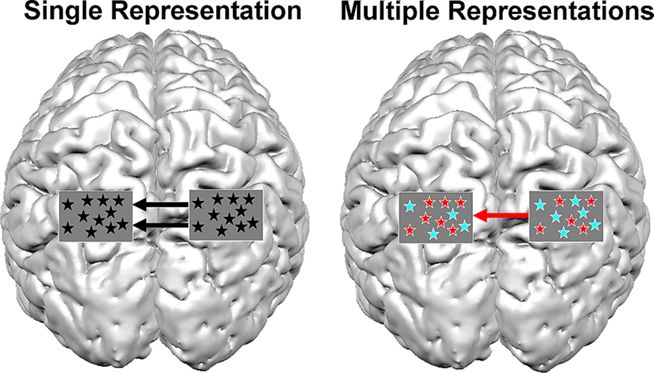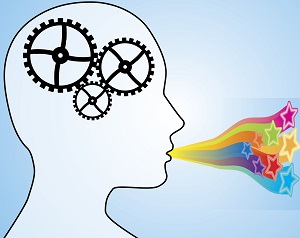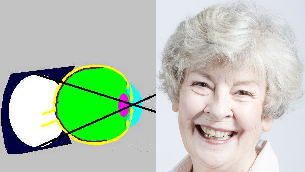01 Mar Hold Onto the Memories
When you see Grandmother, is there a cell or cluster of cells in your brain that light up and say: “I recognize that face – It’s Grandmother!” The Grandmother cell theory suggests that there is such a cell or group of cells where that knowledge is explicitly stored.
Earlier posts included a discussion of feature selectivity in neurons with perceptual processing roles, then described how images can be analyzed and developed for recognition by the perceiver. We then proposed a complete model of recognition and other complex cognitive processes. None of the discussion so far, however, has shown how cells may be able to store data or adapt to feature-selective roles as do complex or hypercomplex cells. In our theory of human information processing, neurons store complex data in their filaments, or in the states of individual filaments, or their parts.
| Understanding Context Cross-Reference |
|---|
| Click on these Links to other posts and glossary/bibliography references |
|
|
|
 Our theory assumes that data is stored in the brain in a multiple representation scheme. Symbolic things, such as mathematical relationships as shown below, are particularly subject to variety in the ways we learn and process them. Tactile data is stored as memory of specific tactile experiences (cold, hot, rough, squishy). Sound data is stored as sound features in a network where sounds activate feature cells. The collection of feature-selective cells that corresponds to a recognized input are connected to association cells that correlate patterns and activate cells in image, sensory, and abstract data centers directly associated with the input.
Our theory assumes that data is stored in the brain in a multiple representation scheme. Symbolic things, such as mathematical relationships as shown below, are particularly subject to variety in the ways we learn and process them. Tactile data is stored as memory of specific tactile experiences (cold, hot, rough, squishy). Sound data is stored as sound features in a network where sounds activate feature cells. The collection of feature-selective cells that corresponds to a recognized input are connected to association cells that correlate patterns and activate cells in image, sensory, and abstract data centers directly associated with the input.
Image data is also stored in a network where feature collections are activated to bring about recognition and associate recognized items with data of other senses. Integration of data from multiple senses enables abstract conceptual processes. Recognition elicits a combination of physical and mental responses, like an accelerated heart rate or an evoked image, in the case of hearing a loved one’s name. In the absence of a sufficiently excited brain centers, recognition will fail.
The multiple representation scheme described here is a mosaic. The mosaic created by sensory input is the reference point of recognition. The sympathetically excited neurons in other processing centers will represent the associations that place the recognized item in context of its class, components, or whatever the associated links yield.
Long-Term Memory
How does knowledge migrate from short-term to long-term memory? How can we hold onto the memories? What happens to a cell that is recruited to perform long-term memory functions? It was recently discovered that the transition to long-term memory doubles the number of synapses from a neuron’s axon termini. Deep memory dramatically increases the number of synaptic vesicles containing neurotransmitter molecules, and increases the number of active zones at the presynaptic membrane where synaptic vesicles can bind and release their chemical messengers (see Section 3).
 These changes amplify impulses, thus directly influencing the weight of synaptic transmissions (Montgomery, 1989). The change is stimulated by an enzyme called adenylate cyclase and results in several of the chemical actions required to change the number and properties of synapses. Molecules of this enzyme can be thought of as instruments of memory.
These changes amplify impulses, thus directly influencing the weight of synaptic transmissions (Montgomery, 1989). The change is stimulated by an enzyme called adenylate cyclase and results in several of the chemical actions required to change the number and properties of synapses. Molecules of this enzyme can be thought of as instruments of memory.
One of the immediate results of adenylate cyclase activation in neurons is the subsequent activation of a protein called kinase. Kinase then catalyzes the activation of at least 17 other proteins that bring about the changes in transmission strengths. Among the proteins activated are the microtubule associated proteins dynein and kinesin, which transport the newly manufactured synaptic vesicles from their fabrication point in the soma to the axon termini. The illustration is an AMP-activated protein kinase (AMPK) fragment with AMP bound. AMPK regulates cellular metabolism depending on energy availability. Atoms are shown as spheres with conventional color coding: hydrogen (white), carbon (grey), oxygen (red), nitrogen (blue) and sulfur (yellow).
Storage of data in the brain is often divided into specialized areas of memory:
- Declarative memory – contains existential knowledge of concepts developed as the result of repeated or high exposure.
- Procedural memory – contains causal knowledge of information we use to act and drive the motor systems of the body.
- Episodic memory – stores information derived from events in our lives.
- Working memory – stores short-term information of immediate importance for use in acting and communicating.
Pattern Storage
The more we perceive things, the better we are able to interpret them and associate them with abstract concepts. It is as if indelible patterns become etched in our minds. On subsequent exposure, the patterns impressed in neural storage can be compared with the new input and strengthened, weakened, modified, or discarded. What does this pattern evoke in your mind? Does it make you want to slow down?
Aristotle seems to think that knowledge constitutes storage of patterns in the mind: “Actual knowledge is identical with its object” (On The Soul, Book III, Chapter 5). He describes relations or associations between two or more objects as “a putting together of objects in a quasi-unity” (ibid, Chapter 6). Writing about the process of association, he says it is “possible to call all these cases division as well as combination” (ibid). In Aristotle’s view, we perceive intelligible objects (including abstract concepts treated as objects), distinguish between them, and either combine related objects in some pattern in the brain or divide objects into their components.
 This view of cognition is extremely intuitive, and couching it in such erudite terms may make it seem esoteric. Yet, to support this theory, it would seem sufficient to simply demonstrate a computer system of hardware and software that can simulate learning and reasoning, and even prompt action. Sir Francis Bacon in “Of Truth” distinguishes “the light of the sense” or perception, from the “light of reason” or cognition. We perceive visual, audio, tactile, aromatic and other patterns (metaphorical light), and we think about these patterns, associate them with previously learned patterns, and draw conclusions (also metaphorical light).
This view of cognition is extremely intuitive, and couching it in such erudite terms may make it seem esoteric. Yet, to support this theory, it would seem sufficient to simply demonstrate a computer system of hardware and software that can simulate learning and reasoning, and even prompt action. Sir Francis Bacon in “Of Truth” distinguishes “the light of the sense” or perception, from the “light of reason” or cognition. We perceive visual, audio, tactile, aromatic and other patterns (metaphorical light), and we think about these patterns, associate them with previously learned patterns, and draw conclusions (also metaphorical light).
Going on to the next logical step, we propagate our own vision of light as we share our thoughts with others. The pattern is likely to undergo unpredictable changes traversing the circuit from perception, to cognition to communication. The unpredictability of those changes can be very beautiful. But the same unpredictability introduces major challenges for automated interpreters. Please stay with us as we discuss how to resolve the ambiguity and unpredictability that perpetually characterizes this process.
| Click below to look in each Understanding Context section |
|---|











